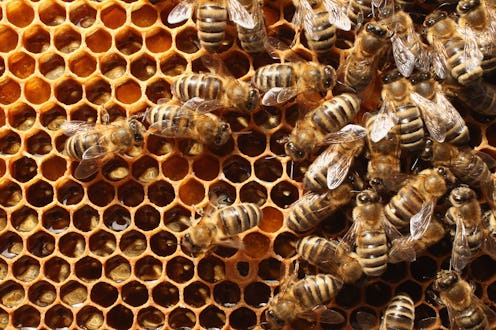News
Bees Are Dying Off, and Now We Know Why
Another mystery has been solved: recent honeybee population collapses are due to insecticides, according to a team of Harvard researchers. The mysterious decline of honeybees over the past several years has been blamed on everything from cell phone radiation to global warming, but the scientists now believe they have evidence that the collapse can be blamed primarily on two widely used insecticides. The study, out of Harvard's School of Public Health, was published in the Bulletin of Insectology this week.
The recent dramatic decline of honeybee populations is largely due to a phenomenon known as colony collapse disorder, in which bees abandon their hives in the winter and eventually die. The researchers followed 18 colonies in Massachusetts, monitoring them for population levels and exposure to insecticides. What they found is an indictment of modern agricultural practices: the populations with the worst outcomes were exposed to two kinds of neonicotinoid, a kind of insecticide, during an especially harsh winter. According to the paper, this is because the cold weather triggers a neurological response in bees exposed to the insecticide:
It is striking and perplexing to observe the empty neonicotinoid-treated colonies because honey bees normally do not abandon their hives during the winter. This observation may suggest the impairment of honey bee neurological functions, specifically memory, cognition, or behaviour, as the results from the chronic sub-lethal neonicotinoid exposure.
The findings could have big implications for industry: the European Union last year banned three kinds of neonicotinoid for a two-year trial, and the Harvard scientists' findings may lead to more of the same. With increasing weather extremes and more need than ever to grow and pollinate healthy crops, the study spreads much further than just the honey industry. "Hopefully," the study's authors say of the findings, "we can reverse the continuing trend of honey bee loss."
